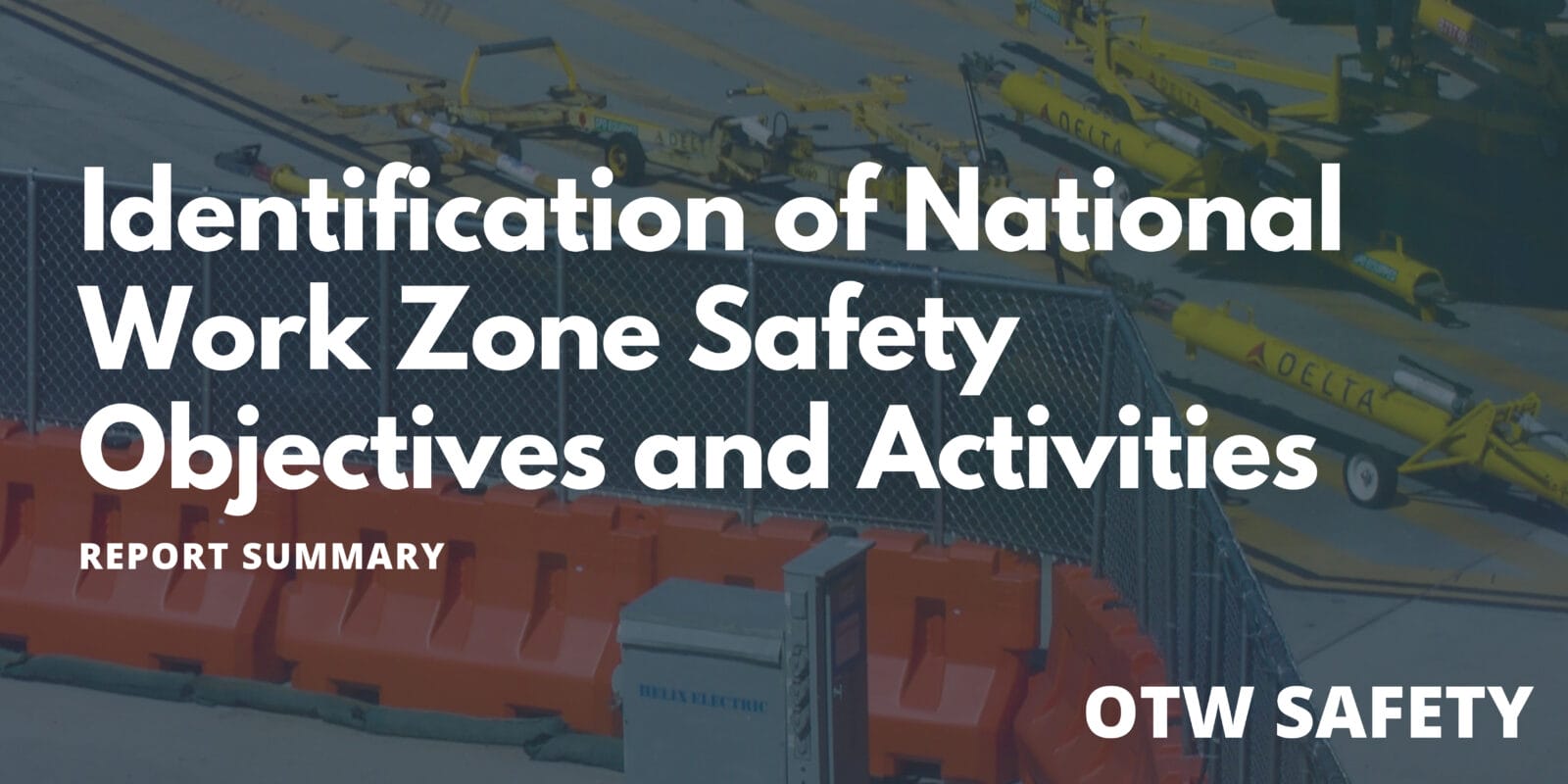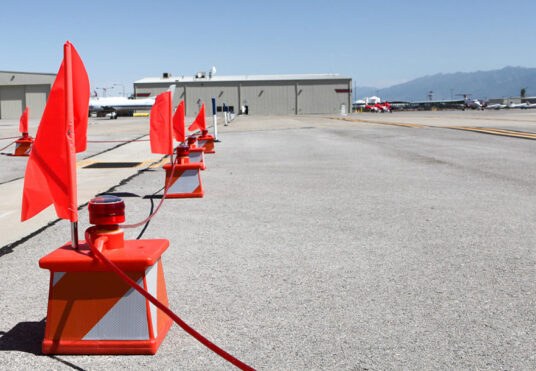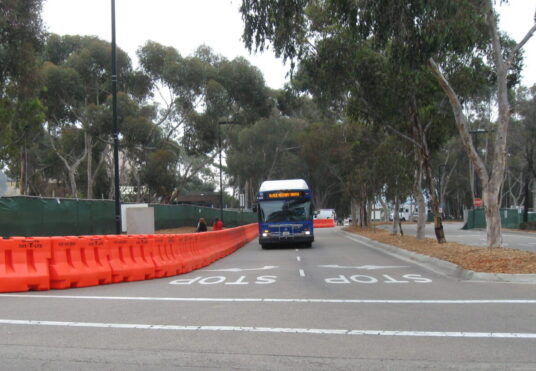Identification of National Work Zone Safety Objectives and Activities: Report Summary

Work zone safety has a long history in the US and with good reason.
Crashes and accidents in work areas are a leading cause of injury and fatality, with work zone fatalities increasing by 10.8% from 2020 to 2021 – most happening on interstate facilities. While drivers and passengers made up the majority of deaths, roadside workers were not unaffected, with 108 killed on the job in 2021, according to the Bureau of Labor Statistics. Forty-five percent of all highway worker fatalities at road construction sites are due to struck-by incidents. The majority of crashes and fatalities occur in the activity area of work zones, putting both workers and drivers at risk.
The 2023 Identification of National Work Zone Safety Objectives and Activities Summary Report was created by the United States Department of Transportation (US DOT) to impart and discuss eleven strategic objectives targeting national work zone safety-related issues. The report identifies needs, objectives, and activities that have the potential to increase overall work zone safety and assist potential stakeholders in prioritizing and implementing strategies. The activities that have been identified are organized into the main categories of research, collaboration, guideline/policy-related, training, outreach, and technology development, and 72 potential activities are recognized. As an important addition, performance measures are also identified for each strategic objective presented in order to gauge success. As noted by the US DOT, the core value of creating this strategy is the eventual adoption of the “Safe System Approach”, which they term as “focusing efforts on achieving safer people, safer roads, safer vehicles, safer speeds, and post-crash care”.
As an agency’s awareness of work zone conditions and activities influences work zone scoping, design, and active project management decisions, it is imperative that stakeholders are cognizant of the issues presented in this report as they pertain to their specific industry or subcategory of industry.
As per the report, the issues are as follows:
- Minimize driver behaviors that contribute to work zone crashes.
- Reduce worker struck-by incidents and work zone activity area intrusions.
- Reduce commercial motor vehicle involvement in fatal and injury work zone crashes.
- Expand the availability of functional data-driven analyses and management processes to enhance work zone safety.
- Improve safety and accommodation of vulnerable road users (i.e., pedestrians, cyclists, and persons on other personal conveyances) through and around work zones.
- Expand the availability, accuracy, and use of work zone event data.
- Identify, evaluate, and implement cost-effective safety improvements to temporary traffic control.
- Improve accommodation of traffic incident management needs in work zones.
- Improve accommodation of motorcyclists through and around work zones.
- Improve connected and autonomous vehicle abilities to approach and traverse (or avoid) work zones more safely.
- Incorporate work zone safety into strategic workforce development efforts.
Chapter 1 introduces the above strategic objectives and the intention behind the report, which is to guide stakeholders in optimizing work zone safety, promoting economic growth, and improving the quality of life for roadway users, while Chapter 2 covers how the research team developed said strategies and who was involved. The team developed an initial draft of the mission and vision of the document, as well as potential objectives and activities based on current data and identification of work zone safety issues.
Chapter 3 discusses in thorough detail how said strategies and activities might be developed; the categories of research, collaboration, guideline/policy-related, training, outreach, technology development, and performance measures are laid out for each. Chapter 4 includes a matrix of which objectives might be relevant to specific stakeholders (e.g. Occupational Safety and Health Administration (OSHA), Federal Highway Administration (FWHA), private contractors, manufacturers, etc), which helps stakeholders know which objectives they should peruse in more detail.
Knowledge is power.
While the 2023 Identification of National Work Zone Safety Objectives and Activities Summary Report was created with specific stakeholders in mind, it can be helpful to all. Knowledge of what safety issues work zones face on a regular basis and the current strategies that are intended to remedy them allows individuals to be a part of working toward resolutions, whether it be someone who is part of a targeted organization or advocacy group… or a civilian (i.e. a “regular person”). Driver behaviors, in particular, are only remediable by drivers themselves taking appropriate action – change cannot happen if people are not willing to do the work!
National Work Zone Awareness Week (NWZAW) is hosted annually, and ran from April 17-21 this year, with a focus on the idea of “You play a role in work zone safety. Work with us”. Both NWZAW and this report are focused on the same thing: reducing injuries, fatalities, and accidents in work zones and work zone related areas. Assisting highway safety stakeholders (state departments of transportation and highway safety offices, the Federal Highway Administration, vehicle manufacturers, driver training organizations, advocacy groups, and even everyday drivers and pedestrians) in learning how to reduce serious injuries and deaths on the nation’s highways, roadways, and in work zones is a top priority of the US Department of Transportation. If all goes to plan, the adoption of these strategies and the overall Safe System Approach will succeed in what they’ve set out to achieve: safer people, safer roads, safer vehicles, safer speeds, and better post-crash care.
Let’s get there together!


